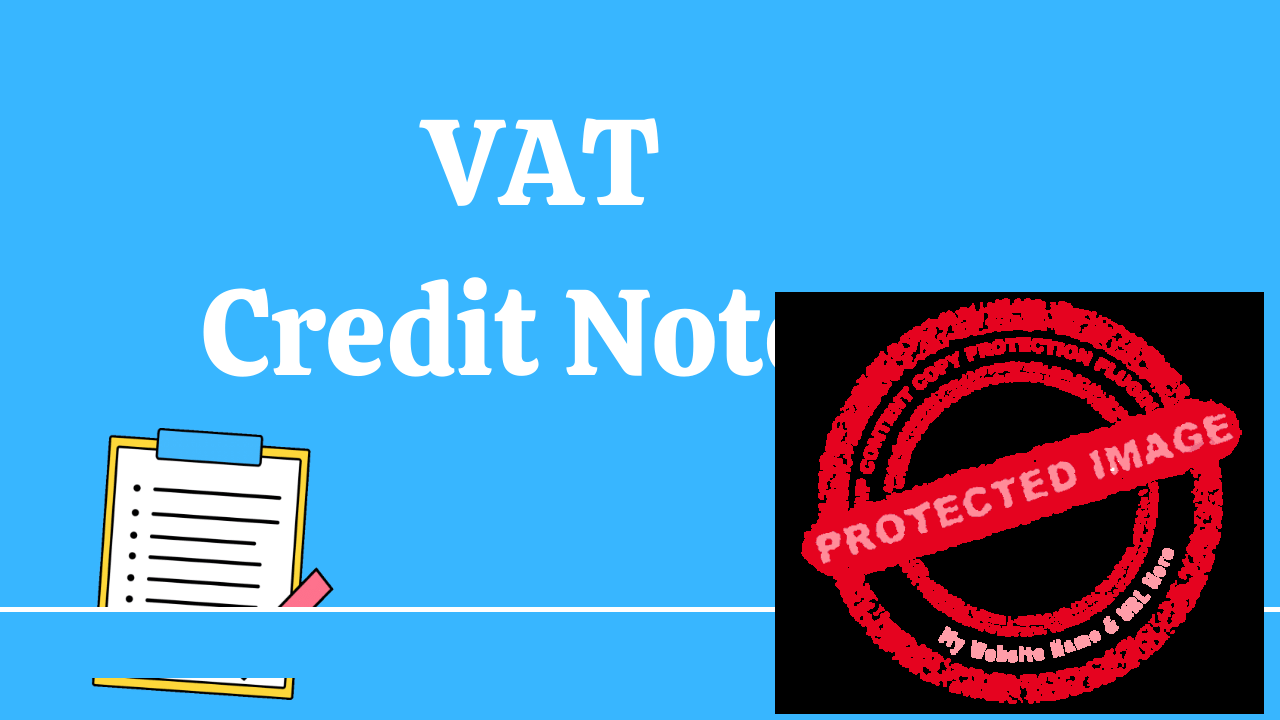Credits notes reduce the sales amount in an invoice. This reduction has VAT and other tax implications. Every taxpayer needs to know the implications of a credit note. Failure to follow the tax law will result in extra tax payments.
In this post we will seek to answer the following questions:
- What is a VAT on Credit Notes?
- How does a VATCredit Note affect a seller’s VAT?
- How does a VAT Credit Note affect a buyer’s VAT?
- What details should be included in a VAT Credit Note?
- How to account for VAT Credit Notes in a VAT Returns?
- What is VAT on Credit Notes?
Sometimes, buyers return goods to sellers after some time. When the goods are returned, the VAT-registered person must issue a credit note for the amount of the goods returned. This is the amount that will be reduced from the original invoice.
This amount in the credit notes comprises the cost of the goods and the VAT on the credit notes. Services cannot be returned. Therefore, in the case of a service, the amount of credit note is the amount that is reduced from the earlier invoiced amount. This is the sales amount and the VAT. A taxpayer cannot issue VAT-only credit notes.
Six months rule
VAT law in Kenya requires that any credit note be issued within six (6) months after the invoice date. In case this is not done, then that credit note cannot be used as a credit note for VAT purposes in Kenya. It is important to note that every credit note refers to a particular earlier invoice.
Credit notes affect a seller’s and a buyer’s VAT position in subsequent months.
30 days rule on case ruling
VAT law also requires that upon a Court ruling on a disputed invoice amount, the taxpayer has thirty (30) days to issue a credit note.
- How does a Credit Note affect a seller’s VAT?
The VAT amount in the credit note is reduced from the output VAT in the month the credit note is issued. The credit note VAT amount will reduce the net VAT amount payable in the month it is issued.
Worked Example
Abdi sold Esther 12 cartons of product each at kshs 1,000 for kshs 12,000 and issued an invoice and a delivery note on 31st January 2020. However, on 5th February 2020, Esther returned 2 cartons. Abdi issued a credit note in February 2020.
Question:
What was the effect of the credit note on Abdi’s VAT (16%) in February 2020?
Answer:
Using a calculator, we determine that the credit note issued by Abdi translated in VAT decrease in February by kshs 2,000 x16% = kshs 320
- How does a Credit Note affect a buyer’s VAT?
The seller will issue the buyer a credit note. The VAT amount in the credit note will reduce the deductible input VAT by the same amount in the month the credit note is issued. The net VAT will decrease in the month because of the reduced VAT input from the credit note.
Worked Example
Ali, a Mombasa-based VAT registered trader, placed a booking and paid kshs 18,000 for six days in Airbnb in Nairobi. However, on the third day, there was national news that bad weather was expected. Ali checked out and demanded a refund and a VAT credit note.
Question:
What was the effect of the credit note on Ali’s VAT (16%)?
Answer:
Ali’s input VAT in February decreased by kshs 9,000 x 16% = kshs 1,440
- What details should be included in a Credit Note?
Various details are required to be included in any credit note. The following are some of the details:
- Name of the supplier. This is the name that appears in the PIN.
- Address of supplier. This includes the physical location, telephone number, and email address.
- PIN of the supplier. A taxpayer cannot use a PIN that belongs to other people.
- The VAT number of the supplier, where applicable. KRA no longer issues VAT, but some taxpayers still have the VAT numbers. The PIN is the main tax number that is used currently.
- Credit notes are serially numbered. The numbers must follow. The taxpayer must account for the missing number if one number is missing.
- Reference invoice that is linked to the credit note. The reference invoice must have the same invoice number that is serially numbered.
- Receipt with a serial number.
- Name of the purchaser. This is the name that appears in the PIN.
- Address of purchaser. This can be the physical location, telephone number, and email address.
- The purchaser’s personal identification number (PIN) is used to capture data in i-Tax.
- Brief description of the supply or the items sold.
- Several units for which the credit note is being issued (where applicable).
Unit price (where applicable).
- Gross amount that should be subjected to VAT.
- The amount of discount, if any, had been given in the invoice. The amount of discount is deducted before levying the VAT.
- Date of supply/transaction. This should be within the last six months.
- The VAT rate was used when the invoice was issued. Currently, the VAT rate is fourteen (14%) percent. For any invoice issued before 1stApril 2020, the VAT rate was sixteen (16%) percent.
- Amount of VAT charged after applying the VAT rate
- The amount is inclusive of the VAT amount. Note that the VAT amount must be separated.
- The total VAT credit note amount is indicated..
This list is not exhaustive. Many other details are required depending on the tax commissioner’s circumstances and requirements.
The seller deducts this VAT amount from that month’s VAT amount. Hence, this amount will reduce the VAT payable in that month. The purchaser who was issued the credit note will have reduced input tax and, therefore, will have more VAT to report.
Every taxpayer must file the credit notes for future reference in case KRA will require to examine them. This list is not exhaustive. Many other details are necessary depending on the tax commissioner’s circumstances and requirements.
The VAT amount in the credit notes will affect the VAT account. The cost of goods or services will affect the income tax in the year the credit note is issued.
- How does one account for Credit Notes in the VAT Returns?
Credit Notes are accounted for when the taxpayer is making monthly VAT returns and also when making the annual income tax return. In i-Tax, in the VAT return template, there is a section where the taxpayer is expected to account for the credit note. Always remember that a credit note must be issued within six months from the date of the invoice.
Did you learn something new?








